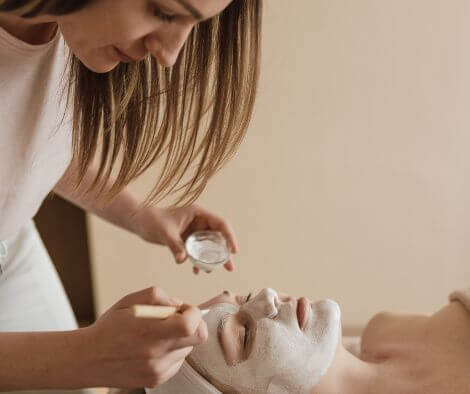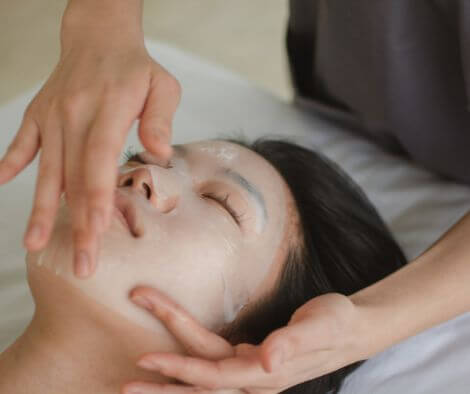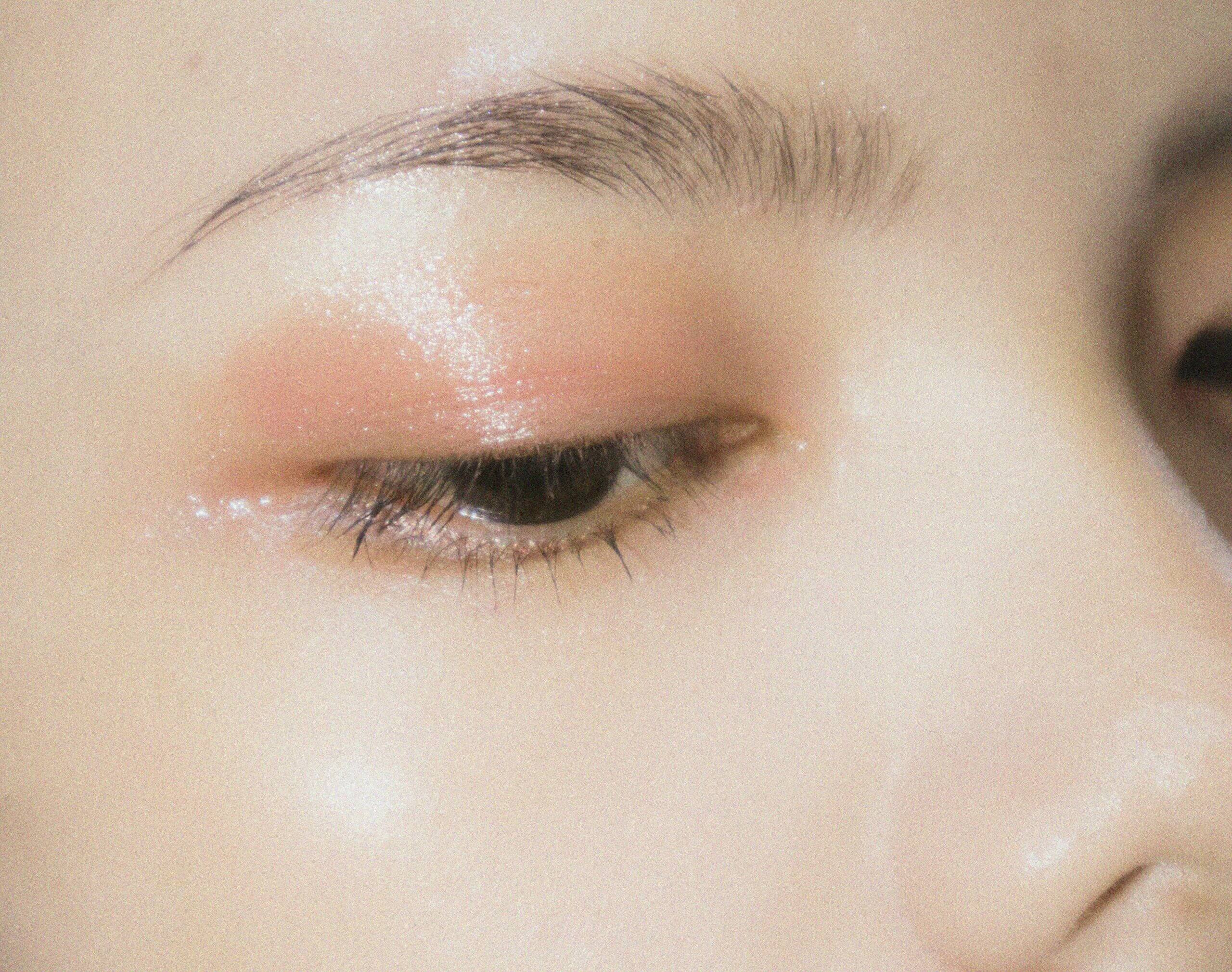Are you struggling to find the right skincare routine for your skin type? Look no further than the Korean approach to treating dry and oily skin types. With their emphasis on achieving healthy, radiant skin, Koreans have perfected skincare techniques tailored specifically for these two common skin concerns. Whether you’re dealing with a dry complexion that needs intense hydration or have trouble controlling excess oil production, the Korean skincare regimen has you covered. By understanding the unique needs of your skin type and following these tried and true techniques, you’ll be on your way to achieving the perfect balance and achieving the skin of your dreams. So let’s dive into the Korean secrets for treating dry and oily skin types!

General Overview
Skincare plays a vital role in our daily lives, helping to maintain the health and appearance of our skin. However, it’s important to understand that not all skincare routines are created equal. Our skin type plays a significant role in determining the products and techniques that work best for us. In the world of skincare, the Korean approach has gained immense popularity for its focus on hydration, gentle products, and a multi-step routine. This article will explore the Korean perspective on skincare, with a specific emphasis on treating dry and oily skin types.
Understanding Dry Skin
Dry skin is characterized by a lack of moisture, resulting in a dull, rough, and sometimes flaky complexion. It often feels tight, especially after cleansing or exposure to harsh weather conditions. Several factors can lead to dry skin, such as genetics, environmental factors, excessive sun exposure, harsh skincare products, and aging. Dry skin can present various challenges, including increased sensitivity, fine lines and wrinkles, and a compromised skin barrier that makes it more susceptible to damage.

Korean Approach to Treating Dry Skin
Hydration is key when it comes to treating dry skin. The Korean skincare approach focuses on providing intense moisture to dry skin through a variety of techniques and products. One of the primary steps in this approach is using a gentle cleanser. Harsh cleansers can strip the skin of its natural oils, exacerbating dryness. Instead, Koreans opt for cleansers that are mild and pH-balanced, ensuring that the skin’s natural moisture barrier remains intact.
Following cleansing, moisturizers take center stage in the Korean skincare routine for dry skin. Korean moisturizers are typically loaded with hydrating ingredients like hyaluronic acid, ceramides, and glycerin. These ingredients work together to replenish the skin’s moisture levels and strengthen its protective barrier. Additionally, incorporating facial oils into the skincare routine can provide an extra boost of hydration, particularly when applied as the last step before moisturizer.
Regular exfoliation is another crucial aspect of the Korean approach to treating dry skin. Gentle exfoliators, such as chemical exfoliants or exfoliating toners, help to remove dead skin cells and promote the absorption of skincare products. This step should be done two to three times a week to avoid over-exfoliation, which can further dry out the skin.
Masks are also highly valued in Korean skincare for their hydrating properties. Sheet masks, in particular, have gained popularity for their ability to deliver a concentrated dose of nourishing ingredients to the skin. These masks are soaked in serums infused with hydrating ingredients, allowing for maximum absorption. Regular use of hydrating face masks can help alleviate dryness and improve the overall appearance of dry skin.
Understanding Oily Skin
Oily skin is characterized by an overproduction of sebum, the skin’s natural oil. Those with oily skin often have a shiny complexion, enlarged pores, and are prone to breakouts. Oily skin can be caused by factors such as genetics, hormonal imbalances, stress, humidity, and certain skincare practices. While oily skin has its challenges, such as excessive sebum production and acne, it also has its benefits, such as being less prone to wrinkles and aging.

Korean Approach to Treating Oily Skin
The Korean skincare approach to treating oily skin aims to balance sebum production, control shine, and prevent breakouts. One of the fundamental steps in this approach is effective cleansing using oil-based products. It may seem counterintuitive to use oil on oily skin, but oil-based cleansers are highly effective at dissolving excess sebum and impurities without stripping the skin. This helps to regulate sebum production and avoid the rebound effect, where the skin produces even more oil to compensate for oil-stripping cleansers.
Balancing sebum production is crucial in managing oily skin. Koreans often incorporate lightweight and oil-free products into their skincare routine to avoid overwhelming the skin with heavy formulas that can exacerbate oiliness. These products are designed to provide adequate hydration without contributing to excess oil production.
Hydration is equally important for oily skin. Contrary to popular belief, oily skin still needs moisture to maintain a healthy balance. Hydrating toners and lightweight moisturizers are key components of the Korean skincare routine for oily skin. These products help to replenish moisture without adding heaviness to the skin.
Exfoliating regularly is also an essential step in controlling oiliness. Koreans often opt for chemical exfoliants, such as AHAs and BHAs, to gently dissolve dead skin cells and unclog pores. This helps to prevent the buildup of excess sebum and reduce the occurrence of breakouts.
Spot treatment is another favored technique in the Korean approach to treating oily skin. By using targeted products, such as pimple patches or spot treatments containing ingredients like tea tree oil, breakouts can be minimized and their lifespan shortened.
The Importance of a Consistent Skincare Routine
Regardless of whether you have dry or oily skin, maintaining a consistent skincare routine is crucial. The Korean skincare approach emphasizes a multi-step routine that focuses on various aspects of skincare, including cleansing, toning, serums, moisturizing, and sun protection.
Cleansing forms the foundation of any skincare routine. It is essential to remove impurities, excess oil, and makeup from the skin to prevent clogged pores and breakouts. Double cleansing, a popular Korean technique, involves using an oil-based cleanser followed by a water-based cleanser to ensure a thorough cleanse without stripping the skin.
Toning helps to balance the skin’s pH levels and prep it for better absorption of subsequent skincare products. Korean toners are typically more hydrating compared to their Western counterparts, containing ingredients like hyaluronic acid to provide an extra layer of moisture.
Serums are concentrated formulations that target specific skin concerns, such as hydration, brightening, or anti-aging. These potent products deliver active ingredients deep into the skin, providing targeted benefits for optimal results.
Moisturizing is crucial for all skin types, as it helps to seal in moisture, strengthen the skin’s barrier function, and prevent water loss. Korean moisturizers are often formulated with hydrating ingredients like hyaluronic acid, snail mucin, or green tea extract to provide intense hydration.
Sun protection is a vital step in any skincare routine, as it helps to prevent sun damage and the premature aging effects of UV rays. Koreans place great emphasis on sun protection, often opting for broad-spectrum sunscreens with high SPF ratings to shield the skin from harmful UV radiation.
Korean Skincare Products and Ingredients
The Korean skincare industry is known for its innovative products and unique ingredients. Here are some key products and ingredients frequently used in Korean skincare routines:
Essence
Essence is a lightweight, hydrating product that is typically used after toning and before serums. It helps to provide an extra layer of hydration and can target specific concerns like brightening or anti-aging.
Ampoules
Similar to serums, ampoules are highly concentrated formulations that deliver potent ingredients to the skin. They are often used as a booster for specific skin concerns.
Sheet Masks
Sheet masks are a quintessential part of the Korean skincare routine. These individually soaked cotton or hydrogel masks are infused with serums and are designed to be left on the skin for a specific period to deliver deep hydration and nourishment.
Serums
As mentioned earlier, serums are highly concentrated formulations that target specific concerns. They are designed to penetrate deep into the skin and deliver active ingredients, such as hyaluronic acid or vitamin C, for maximum efficacy.
Emulsions
Emulsions are lightweight moisturizers that provide a boost of hydration without feeling heavy on the skin. They are ideal for those with combination or oily skin who prefer a lighter texture.
Hydrogels
Hydrogels are gel-like formulations that are designed to provide intense hydration. They are often used as masks or eye patches and are known for their cooling and soothing properties.
Snail Mucin
Snail mucin is a trending ingredient in Korean skincare. It is known for its ability to hydrate, soothe, and repair the skin. Snail mucin products, such as serums or creams, can help improve skin texture and promote a healthy complexion.
Green Tea Extract
Green tea extract is a popular ingredient in Korean skincare due to its antioxidant and anti-inflammatory properties. It helps to soothe and calm the skin, making it ideal for sensitive or irritated skin types.
Centella Asiatica
Centella Asiatica, also known as Cica or Tiger Grass, is a botanical ingredient that has been used in Korean skincare for ages. It has soothing and healing properties, making it effective for calming redness and promoting skin regeneration.
Hyaluronic Acid
Hyaluronic acid is a hydrating ingredient that can hold up to 1000 times its weight in water. It helps to plump and hydrate the skin, reducing the appearance of fine lines and wrinkles.
Natural Remedies in Korean Skincare
In addition to innovative products and ingredients, Korean skincare also incorporates natural remedies. Here are some commonly used natural ingredients in Korean skincare:
Rice Water
Rice water has been used for centuries in Korean skincare for its brightening and soothing properties. It is believed to improve skin tone and texture, leaving the skin radiant and supple.
Honey
Honey is a natural humectant, meaning it helps to draw moisture into the skin. It is known for its antibacterial and anti-inflammatory properties, making it beneficial for acne-prone skin.
Aloe Vera
Aloe vera is renowned for its soothing and hydrating properties. It helps to calm inflammation, heal damaged skin, and provide relief for dry or sunburned skin.
Tea Tree Oil
Tea tree oil is a potent ingredient that has antibacterial and antimicrobial properties. It is commonly used for its ability to treat acne and calm redness and inflammation.
Rosewater
Rosewater is a gentle and hydrating ingredient that is often used as a toner or facial mist. It helps to balance the skin’s pH levels and provides a refreshing boost of hydration.
Green Tea
Green tea is packed with antioxidants that help fight free radicals and protect the skin from environmental damage. It also has anti-inflammatory properties, making it ideal for sensitive or irritated skin.
Calendula
Calendula is known for its soothing and healing properties. It helps to calm irritated skin, reduce redness, and promote a healthy complexion.
Cucumber
Cucumber is naturally cooling and hydrating, making it a popular ingredient in skincare products. It helps to reduce puffiness, soothe irritated skin, and provide a refreshing sensation.
Additional Korean Skincare Practices
Korean skincare goes beyond just the products and ingredients. There are additional practices that are commonly followed to enhance the effectiveness of the skincare routine:
Double Cleansing
Double cleansing involves using an oil-based cleanser followed by a water-based cleanser to ensure a thorough cleanse without stripping the skin. It helps to remove impurities, makeup, and excess oil, leaving the skin clean and refreshed.
Seven Skin Method
The seven skin method involves layering multiple applications of a hydrating toner or essence to provide intense hydration to the skin. It helps to plump the skin, improve its texture, and enhance the absorption of subsequent skincare products.
Layering Products
Layering products is a common practice in the Korean skincare routine. Rather than applying one thick layer of product, Koreans opt for multiple thin layers to allow each product to be absorbed properly.
Face Massage Techniques
Face massage techniques, such as tapping, massaging, or lymphatic drainage, are often incorporated into Korean skincare routines. These techniques help to improve blood circulation, relieve tension, and promote a healthy glow.
Facial Steaming
Facial steaming is a popular practice in Korean skincare for deep cleansing and boosting hydration. It involves exposing the face to steam, either through a steamer or a bowl of hot water, to open up the pores and allow for better product absorption.
Conclusion
In conclusion, the Korean approach to skincare is focused on maintaining the health and vitality of the skin through hydration, gentle products, and a comprehensive skincare routine. Whether you have dry or oily skin, the Korean skincare philosophy offers valuable insights and techniques for addressing specific concerns and achieving a healthy, radiant complexion. By understanding your skin type, incorporating appropriate products and ingredients, and following a consistent skincare routine, you can unlock the benefits of the Korean skincare approach and enjoy the transformative power of a well-cared-for skin.

